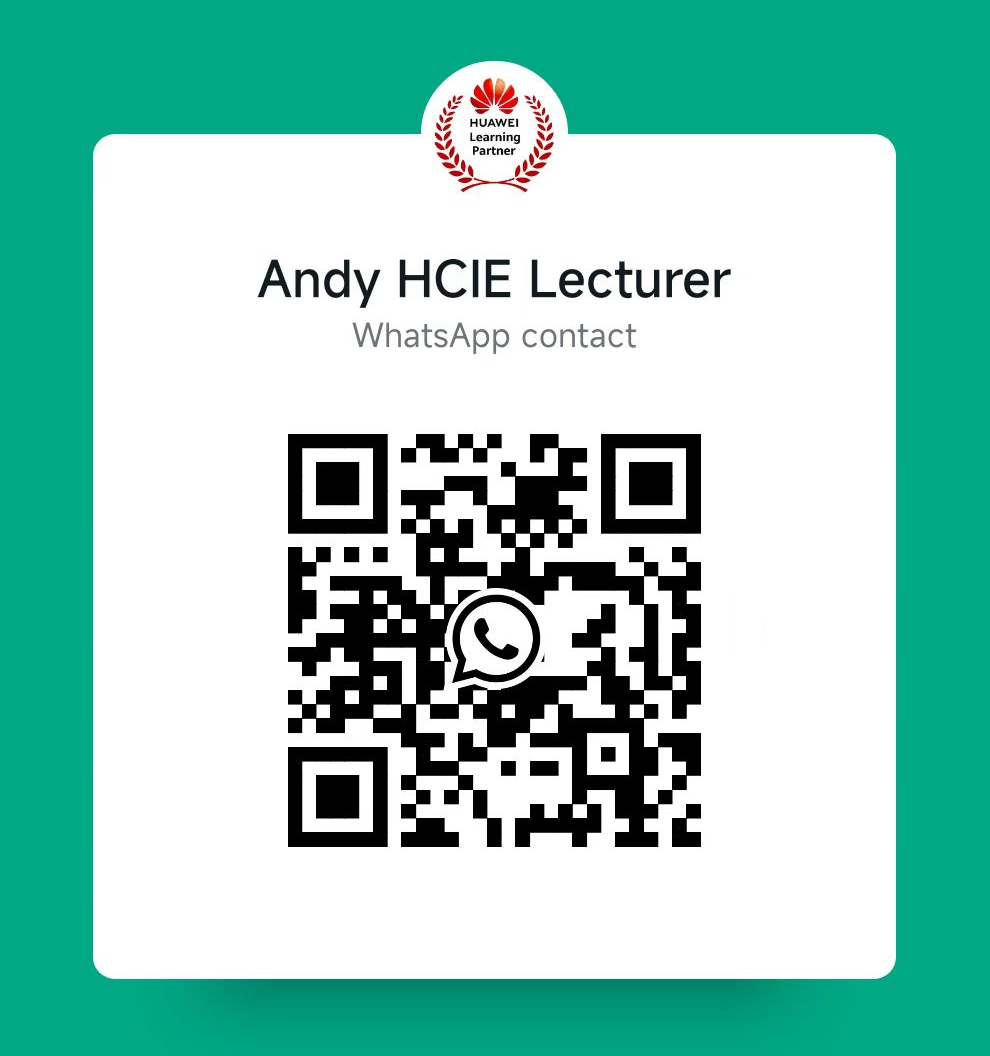Does the CCNP exam include lab work?
Update time:2024-11-09
The Cisco Certified Network Professional (CCNP) certification is one of the most respected credentials for networking professionals looking to validate their skills in specific areas of networking, such as enterprise networking, security, service provider, and more. A common question asked by candidates preparing for the CCNP exam is whether or not the exam includes lab work. The short answer is: Yes, to a certain extent, the CCNP exam does include lab-based questions, but it may not be as intensive as a full hands-on lab exam like the CCIE (Cisco Certified Internetwork Expert). This article will explore the role of lab work in the CCNP certification, how it is incorporated, and the level of hands-on skills required to pass.

The Structure of the CCNP Exam
The CCNP certification typically consists of two exams: one core exam and one concentration exam, which varies based on the track (such as Enterprise, Security, Collaboration, Data Center, etc.).
Core Exam: Covers foundational knowledge and technologies.
Concentration Exam: Focuses on specific areas like advanced routing, network design, or automation.
While these exams primarily consist of multiple-choice questions and scenario-based questions, they also integrate simulation-based or lab-style questions to assess your practical knowledge.
Lab-Style Questions in the CCNP Exam
Cisco includes simulated lab questions within the CCNP exam. These questions aim to test your ability to configure devices, troubleshoot networks, and apply knowledge in real-world scenarios. While these are not full lab exams in the traditional sense (where you have access to live devices), they provide a virtual environment where you can perform tasks similar to what you would encounter in a real-world network.
1. Simulation-Based Questions
One of the key types of questions that test practical skills are network simulations. You are provided with a simulated Cisco environment that mimics real routers, switches, and other networking devices. You will be asked to perform specific tasks, such as configuring a router, setting up OSPF (Open Shortest Path First), or troubleshooting a BGP (Border Gateway Protocol) connection.
For example, a simulation question might look like this:
Configure a router to establish an OSPF adjacency with another router in a different area.
Troubleshoot a VLAN that isn't passing traffic between switches.
The simulation questions are designed to test both your knowledge of networking protocols and your ability to implement those protocols in real-world scenarios. These questions require hands-on configuration and troubleshooting skills, which reflect what a network engineer would do in their daily job.
2. Drag-and-Drop Questions
While not strictly lab work, drag-and-drop questions require candidates to arrange steps or concepts in the correct order. For example, you might be asked to drag and drop commands in the order necessary to configure a BGP session or troubleshoot a Layer 2 issue. These questions test your understanding of processes and the logic behind network configurations, which are critical in a lab setting.
3. Scenario-Based Questions
In addition to simulation and drag-and-drop questions, the CCNP exam includes scenario-based questions, where you are given a network topology or a set of configurations and must solve related problems. These questions often require you to apply your knowledge practically, just as you would in a lab environment.
For example:
Given the following network setup, how would you resolve connectivity issues between two remote sites?
What changes would you make to improve routing efficiency in a multi-area OSPF network?
Scenario-based questions are highly practical and simulate the real-world problems that network engineers face when managing complex networks.
Contact me immediately to get the golden key helping you fast express your certificate. How Does This Compare to the CCIE Lab Exam?
For comparison, the CCIE (Cisco Certified Internetwork Expert) exam is Cisco’s highest-level certification, and it does include a dedicated, hands-on lab exam. The CCIE lab exam is an eight-hour practical test where candidates must configure, troubleshoot, and optimize complex network infrastructures.
While the CCNP exam does not go to this extreme, its simulation-based and scenario-based questions are designed to ensure that candidates possess the necessary hands-on skills required for network management and troubleshooting at a professional level. The lab-like questions on the CCNP exam are therefore a way to bridge the gap between purely theoretical knowledge and practical, on-the-job skills.
Why Are Lab-Style Questions Important?
Lab-style questions in the CCNP exam serve several critical purposes:
1. Testing Practical Knowledge: Understanding networking concepts is important, but being able to apply that knowledge in a real-world setting is even more critical. Lab-based questions test whether candidates can configure and troubleshoot networks in realistic scenarios.
2. Hands-On Skills: Network professionals are expected to have hands-on skills in configuring devices, setting up routing protocols, and ensuring network security. Lab questions validate these practical abilities.
3. Problem-Solving: Many network issues require careful analysis and troubleshooting. Scenario-based questions and simulations assess your problem-solving skills and your ability to diagnose and resolve network problems effectively.
4. Real-World Application: By simulating real-world network environments, Cisco ensures that CCNP-certified professionals are ready to handle the complexities of modern networking jobs. These questions mimic the challenges faced by network engineers in their daily tasks.
How to Prepare for Lab-Style Questions on the CCNP Exam
To succeed in the CCNP exam, especially when facing simulation and lab-based questions, it’s important to focus on gaining hands-on experience. Here are some tips to help you prepare:
1. Practice on Real Equipment: Whenever possible, practice using real routers and switches. This will give you a better understanding of how network devices work and will help you become more comfortable with the configuration process.
2. Use Simulators: If you don’t have access to physical equipment, use network simulators like Cisco Packet Tracer or GNS3. These tools allow you to set up virtual networks and practice configurations in a controlled environment.
3. Focus on Labs in Study Materials: Many study guides and training programs include lab exercises. Make sure to complete these labs to reinforce your knowledge and prepare for the practical aspects of the exam.
4. Join Study Groups: Collaborating with other professionals who are also preparing for the CCNP exam can be beneficial. You can share knowledge, work on labs together, and troubleshoot problems as a team.
Conclusion
While the CCNP exam does not include a full hands-on lab like the CCIE exam, it does incorporate simulation-based questions, scenario-based questions, and drag-and-drop tasks that test practical networking skills. These questions ensure that candidates are not only theoretically knowledgeable but also capable of performing real-world tasks, such as configuring devices and troubleshooting networks. To succeed in these lab-style questions, hands-on practice is essential. By gaining practical experience and using network simulators, you can develop the skills needed to pass the CCNP exam and excel in your networking career.
I'm your man who have the 100% valid dumps , buy it now for 50% off to clear your exam!
Click it ↓↓

The Structure of the CCNP Exam
The CCNP certification typically consists of two exams: one core exam and one concentration exam, which varies based on the track (such as Enterprise, Security, Collaboration, Data Center, etc.).
Core Exam: Covers foundational knowledge and technologies.
Concentration Exam: Focuses on specific areas like advanced routing, network design, or automation.
While these exams primarily consist of multiple-choice questions and scenario-based questions, they also integrate simulation-based or lab-style questions to assess your practical knowledge.
Lab-Style Questions in the CCNP Exam
Cisco includes simulated lab questions within the CCNP exam. These questions aim to test your ability to configure devices, troubleshoot networks, and apply knowledge in real-world scenarios. While these are not full lab exams in the traditional sense (where you have access to live devices), they provide a virtual environment where you can perform tasks similar to what you would encounter in a real-world network.
1. Simulation-Based Questions
One of the key types of questions that test practical skills are network simulations. You are provided with a simulated Cisco environment that mimics real routers, switches, and other networking devices. You will be asked to perform specific tasks, such as configuring a router, setting up OSPF (Open Shortest Path First), or troubleshooting a BGP (Border Gateway Protocol) connection.
For example, a simulation question might look like this:
Configure a router to establish an OSPF adjacency with another router in a different area.
Troubleshoot a VLAN that isn't passing traffic between switches.
The simulation questions are designed to test both your knowledge of networking protocols and your ability to implement those protocols in real-world scenarios. These questions require hands-on configuration and troubleshooting skills, which reflect what a network engineer would do in their daily job.
2. Drag-and-Drop Questions
While not strictly lab work, drag-and-drop questions require candidates to arrange steps or concepts in the correct order. For example, you might be asked to drag and drop commands in the order necessary to configure a BGP session or troubleshoot a Layer 2 issue. These questions test your understanding of processes and the logic behind network configurations, which are critical in a lab setting.
3. Scenario-Based Questions
In addition to simulation and drag-and-drop questions, the CCNP exam includes scenario-based questions, where you are given a network topology or a set of configurations and must solve related problems. These questions often require you to apply your knowledge practically, just as you would in a lab environment.
For example:
Given the following network setup, how would you resolve connectivity issues between two remote sites?
What changes would you make to improve routing efficiency in a multi-area OSPF network?
Scenario-based questions are highly practical and simulate the real-world problems that network engineers face when managing complex networks.
Contact me immediately to get the golden key helping you fast express your certificate. How Does This Compare to the CCIE Lab Exam?
For comparison, the CCIE (Cisco Certified Internetwork Expert) exam is Cisco’s highest-level certification, and it does include a dedicated, hands-on lab exam. The CCIE lab exam is an eight-hour practical test where candidates must configure, troubleshoot, and optimize complex network infrastructures.
While the CCNP exam does not go to this extreme, its simulation-based and scenario-based questions are designed to ensure that candidates possess the necessary hands-on skills required for network management and troubleshooting at a professional level. The lab-like questions on the CCNP exam are therefore a way to bridge the gap between purely theoretical knowledge and practical, on-the-job skills.
Why Are Lab-Style Questions Important?
Lab-style questions in the CCNP exam serve several critical purposes:
1. Testing Practical Knowledge: Understanding networking concepts is important, but being able to apply that knowledge in a real-world setting is even more critical. Lab-based questions test whether candidates can configure and troubleshoot networks in realistic scenarios.
2. Hands-On Skills: Network professionals are expected to have hands-on skills in configuring devices, setting up routing protocols, and ensuring network security. Lab questions validate these practical abilities.
3. Problem-Solving: Many network issues require careful analysis and troubleshooting. Scenario-based questions and simulations assess your problem-solving skills and your ability to diagnose and resolve network problems effectively.
4. Real-World Application: By simulating real-world network environments, Cisco ensures that CCNP-certified professionals are ready to handle the complexities of modern networking jobs. These questions mimic the challenges faced by network engineers in their daily tasks.
How to Prepare for Lab-Style Questions on the CCNP Exam
To succeed in the CCNP exam, especially when facing simulation and lab-based questions, it’s important to focus on gaining hands-on experience. Here are some tips to help you prepare:
1. Practice on Real Equipment: Whenever possible, practice using real routers and switches. This will give you a better understanding of how network devices work and will help you become more comfortable with the configuration process.
2. Use Simulators: If you don’t have access to physical equipment, use network simulators like Cisco Packet Tracer or GNS3. These tools allow you to set up virtual networks and practice configurations in a controlled environment.
3. Focus on Labs in Study Materials: Many study guides and training programs include lab exercises. Make sure to complete these labs to reinforce your knowledge and prepare for the practical aspects of the exam.
4. Join Study Groups: Collaborating with other professionals who are also preparing for the CCNP exam can be beneficial. You can share knowledge, work on labs together, and troubleshoot problems as a team.
Conclusion
While the CCNP exam does not include a full hands-on lab like the CCIE exam, it does incorporate simulation-based questions, scenario-based questions, and drag-and-drop tasks that test practical networking skills. These questions ensure that candidates are not only theoretically knowledgeable but also capable of performing real-world tasks, such as configuring devices and troubleshooting networks. To succeed in these lab-style questions, hands-on practice is essential. By gaining practical experience and using network simulators, you can develop the skills needed to pass the CCNP exam and excel in your networking career.
I'm your man who have the 100% valid dumps , buy it now for 50% off to clear your exam!
Click it ↓↓














